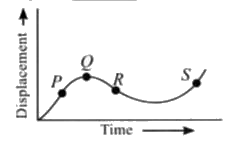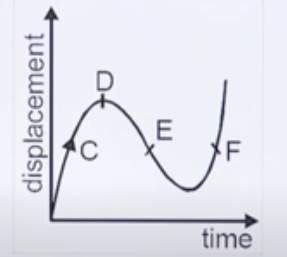Which is velocity time graph of a moving particle on which net external force is zero




The correct Answer is:A
To determine which velocity-time (V-t) graph indicates that the net external force acting on a moving particle is zero, we can analyze the characteristics of each graph. Here’s the step-by-step solution:
Step 1: Understand the relationship between force, mass, and acceleration
According to Newton's second law of motion, the net external force (F_net) acting on an object is given by the equation:
Fnet=m⋅a
where:
- Fnet is the net external force,
- m is the mass of the object,
- a is the acceleration of the object.
Step 2: Analyze the velocity-time graph
The slope of a velocity-time graph represents the acceleration of the object. If the slope is zero, it means that the velocity is constant, and thus the acceleration is zero.
Step 3: Evaluate the options
1. Option 1: A horizontal straight line parallel to the time axis.
- This indicates that the velocity is constant over time. Therefore, the acceleration is zero, leading to:
Fnet=m⋅0=0
- This means the net external force is zero.
2. Option 2: A line with a positive slope.
- This indicates that the velocity is increasing over time, meaning the acceleration is positive. Thus, there is a non-zero net external force.
3. Option 3: A line with a negative slope.
- This indicates that the velocity is decreasing over time, meaning the acceleration is negative. Thus, there is a non-zero net external force.
4. Option 4: A vertical line.
- A vertical line implies an infinite rate of change of velocity, which is not physically possible in real scenarios. This would indicate an infinite acceleration and thus an infinite force.
Step 4: Conclusion
Based on the analysis, the only graph that indicates a net external force of zero is Option 1, where the velocity-time graph is a horizontal straight line.
Final Answer
The correct option is Option 1.
---
According to Newton's second law of motion, the net external force (F_net) acting on an object is given by the equation:
Fnet=m⋅a
where:
- Fnet is the net external force,
- m is the mass of the object,
- a is the acceleration of the object.
The slope of a velocity-time graph represents the acceleration of the object. If the slope is zero, it means that the velocity is constant, and thus the acceleration is zero.
1. Option 1: A horizontal straight line parallel to the time axis.
- This indicates that the velocity is constant over time. Therefore, the acceleration is zero, leading to:
Fnet=m⋅0=0
- This means the net external force is zero.
- This indicates that the velocity is increasing over time, meaning the acceleration is positive. Thus, there is a non-zero net external force.
- This indicates that the velocity is decreasing over time, meaning the acceleration is negative. Thus, there is a non-zero net external force.
- A vertical line implies an infinite rate of change of velocity, which is not physically possible in real scenarios. This would indicate an infinite acceleration and thus an infinite force.
Based on the analysis, the only graph that indicates a net external force of zero is Option 1, where the velocity-time graph is a horizontal straight line.
The correct option is Option 1.
Topper's Solved these Questions
- FORCE AND LAWS OF MOTIONBOOK - MTG IIT JEE FOUNDATIONCHAPTER - FORCE AND LAWS OF MOTIONEXERCISE - EXERCISE (MATCH THE FOLLOWING )
2 Videos
- FORCE AND LAWS OF MOTIONBOOK - MTG IIT JEE FOUNDATIONCHAPTER - FORCE AND LAWS OF MOTIONEXERCISE - EXERCISE (ASSERTION AND REASON )
10 Videos
- FORCE AND LAWS OF MOTIONBOOK - MTG IIT JEE FOUNDATIONCHAPTER - FORCE AND LAWS OF MOTIONEXERCISE - EXERCISE MULTIPLE CHOICE QUESTIONS
1 Videos
- FOOTSTEPS TOWARDS NEETBOOK - MTG IIT JEE FOUNDATIONCHAPTER - FOOTSTEPS TOWARDS NEETEXERCISE - Multiple Choice Question
45 Videos
- GRAVITATION BOOK - MTG IIT JEE FOUNDATIONCHAPTER - GRAVITATION EXERCISE - Olympiad/HOTS Corner
20 Videos
Similar Questions
Knowledge Check
Assertion : An external force is required to keep a body in motion.
Reason : If the net external force is zero, a body at rest continues to remain at rest and a body in motion continues to move with a uniform velocity.AIf both assertion and reason are true and reason is the correct explanation of assertion.BIf both assertion and reason are true and reason is the not correct explanation of assertion.CIf assertion is true but reason is falseDIf both assertion and reason are false.The position- time graph of a moving particle is shown. The instantaneous velocity of the particle is negative at the point
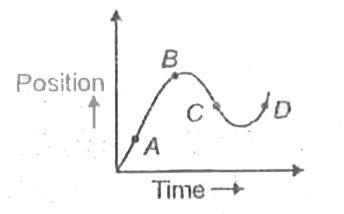 AABBCCDD
AABBCCDDFigure shows velocity time graph of a particle moving in straight line. Which of the following statement(s) is / are CORRECT:−
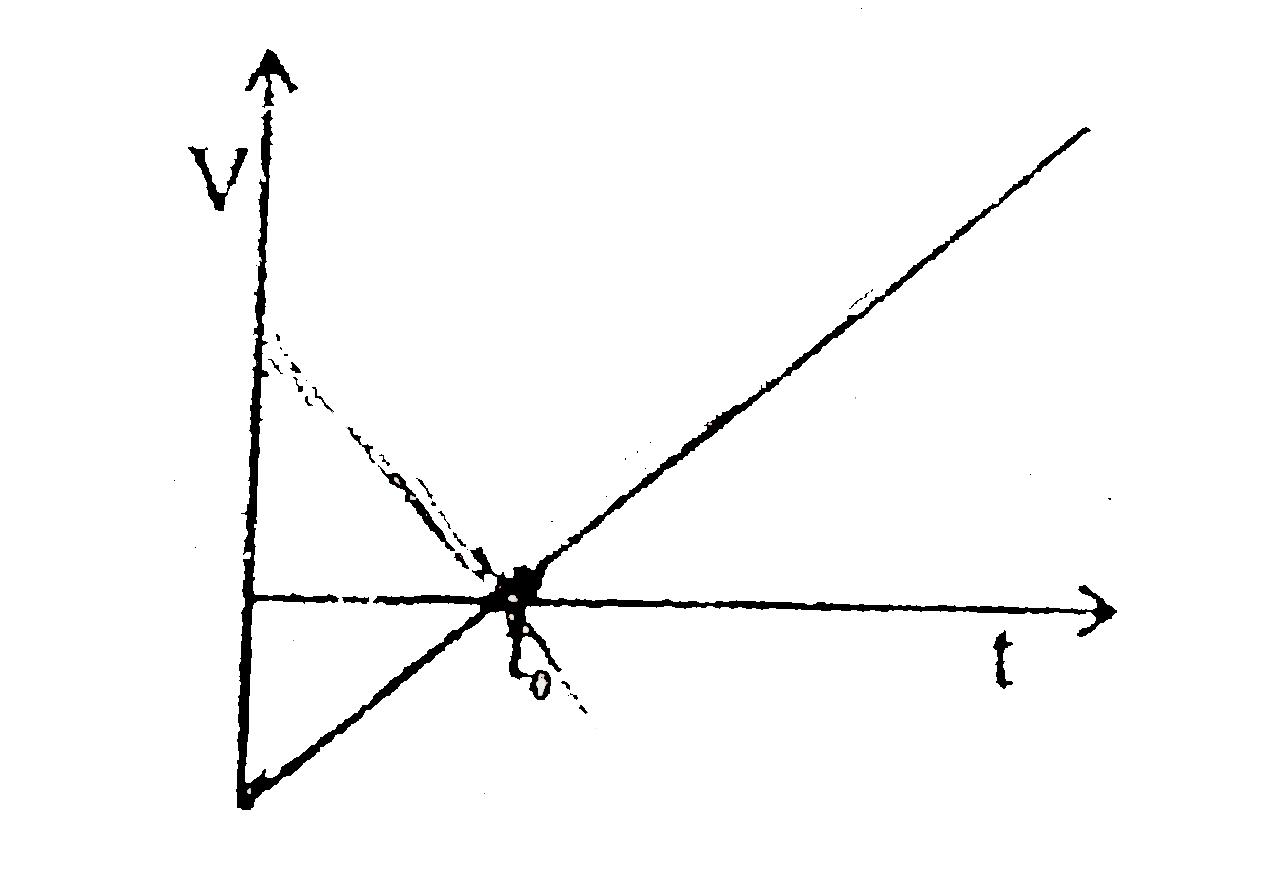 AParticle crosses its initial positionBSpeed of the particle Increases continuouslyCAcceleration of patticle is zeroDAt t0,d∣∣→V∣∣dt of particle is zero.
AParticle crosses its initial positionBSpeed of the particle Increases continuouslyCAcceleration of patticle is zeroDAt t0,d∣∣→V∣∣dt of particle is zero.
The displacement time graph of a moving particle is shown below
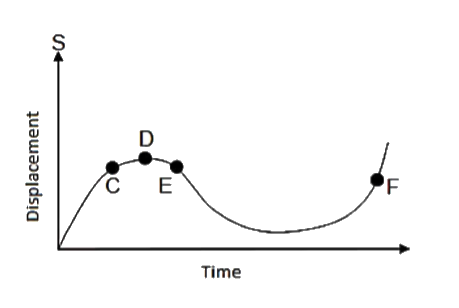
The instantaneous velocity of the particle is negative at the point
View SolutionThe velocity -time (v−t) graph of a particle moving in a straight line is shown in figure. The acceleration of the particle at t=9 is:
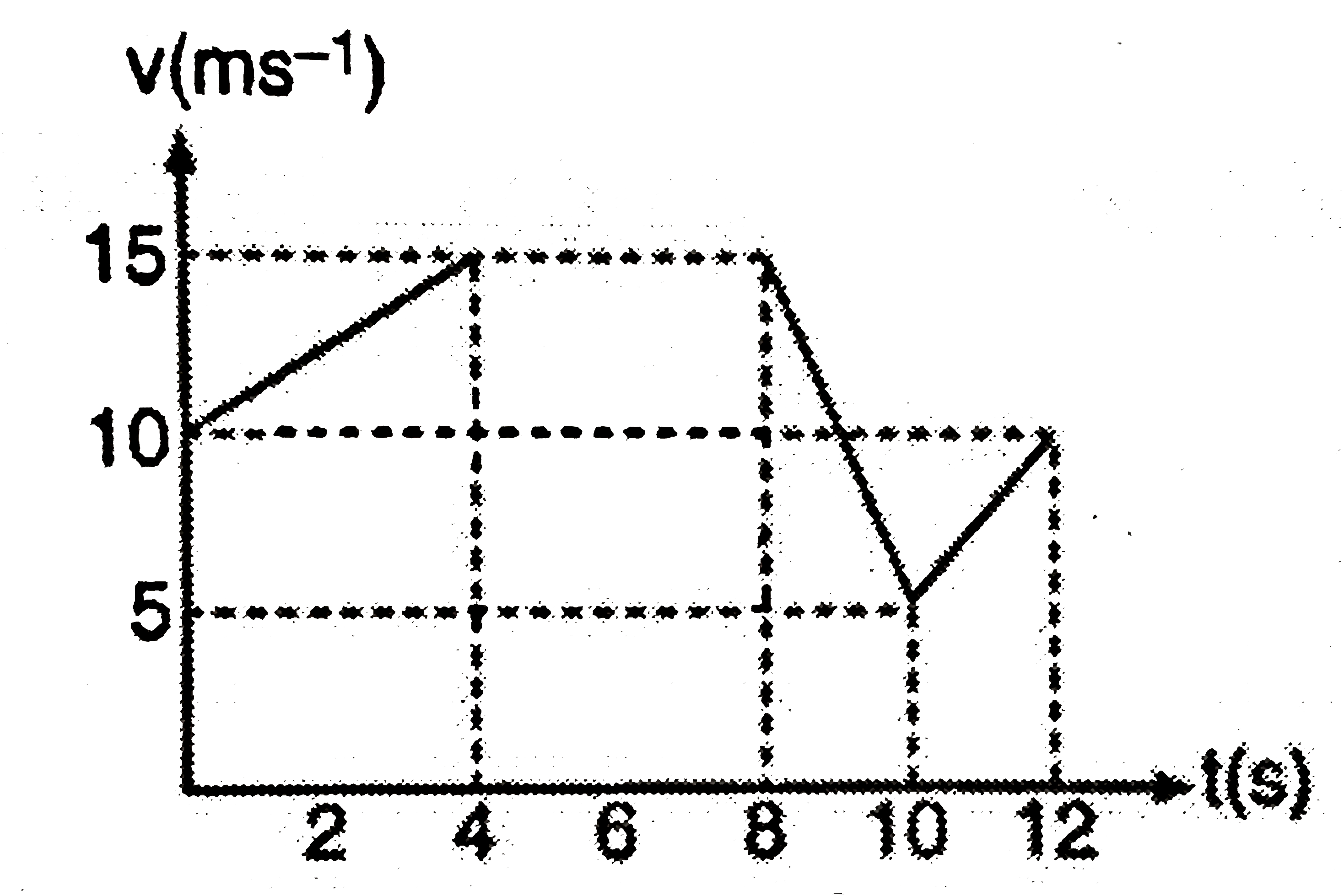
View SolutionThe displacement-time graph of a moving particle is shown below. The instantaneous velocity of the particle is negative at the point
View SolutionThe displacement-time graph of a moving particle is shown below. The instantaneous velocity of the particle is negative at the point
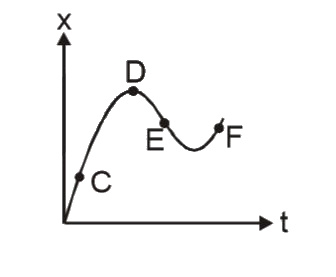
View SolutionThe velocity - time graph of a particle of mass 10 kg is shown in the figure. The net work done on the particle in the first two seconds of the motion is

View Solution

